In this article we will cover every class, or profession as we call it in Guild Wars 2, in the game. Next to that we will also cover all the Elite Specializations for each profession. Even the new ones that came with the End of Dragons Expansion.
Class/Profession Tier List
If you are totally new to Guild Wars 2, let’s start with the difficulty of each profession and their Elite Specializations. Take this with a grain of salt. It’s a subjective list. It’s based on my experience of playing Guild Wars 2 for the last 10 years. If we tell you that a Thief is a harder profession, don’t let that discourage you from playing a Thief! But if you want to play an easy profession to start with, this is a segment for you.
| Difficulty | Professions |
|---|---|
| Easy | Warrior, Ranger, Guardian and Necromancer |
| Intermediate (medium) | Revenant and Mesmer |
| Hard | Engineer, Thief and Elementalist |
Easy / Starter Professions
The Warrior, Ranger, Guardian and Necromancer are the easier professions. These are great professions to start the game with! This is simply because these professions have some form of sustain that makes it easier for them to survive. For example, the Ranger’s pet or the minions of the necromancer can aid you in combat and make it easier for you when leveling.
Intermediate Professions
The Revenant and the Mesmer as professions with an intermediate difficulty. You can definitely start playing Guild Wars 2 as a Revenant or Mesmer but these professions might require a bit more time to get used to. These professions have an extra mechanic you have to manage in order to be effective.
Hard Professions
The Engineer, Thief and Elementalist are considered as professions with a harder difficulty.
These professions have a great amount of skills and have additional mechanics you have to mange. Therefore, these professions are somewhat harder to learn and to master.

Elite Specializations Tier List / Difficulty
The Elite Specializations, which we will dig deeper into later in this article, also differ in difficulty. These Elite Specializations are enhancements for the professions (classes). If you want more information about Specializations and Elite Specializations, check out the video below:
In the chart below you will find all the professions and their corresponding Elite Specializations. The number of asterisks (*) represent the difficulty of the Elite Specializations. 1 asterisk (*) = easy, 2 asterisks (**) = intermediate, 3 asterisks (***) = hard.
| Profession / Expansion | Heart of Thorns Elite Specializations | Path of Fire Elite Specializations | End of Dragons Elite Specializations |
|---|---|---|---|
| Warrior | Berserker* | Spellbreaker** | Bladesworn** |
| Guardian | Dragonhunter* | Firebrand** | Willbender*** |
| Revenant | Herald* | Renegade* | Vindicator** |
| Ranger | Druid* | Soulbeast** | Untamed*** |
| Thief | Daredevil* | Deadeye** | Specter*** |
| Engineer | Scrapper** | Holosmith* | Mechanist* |
| Necromancer | Reaper* | Scourge** | Harbinger** |
| Elementalist | Tempest* | Weaver*** | Catalyst*** |
| Mesmer | Chronomancer** | Mirage* | Virtuoso* |
Warrior
Alright, let’s look at our first profession; the Warrior. You are probably familiar with the warrior class or profession from other games. The Warrior in Guild Wars 2 is a Heavy Armored profession that is mainly focused on dealing melee damage.

Adrenaline is the Warrior’s unique profession mechanic. Whenever a Warrior attacks you build up Adrenaline. You can see this adrenaline buildup above your skill bar. With this adrenaline you can unleash a powerful burst attack with the weapon you are currently using. The more adrenaline you have, the more powerful the burst attack will be.

The Warrior’s skills boost their performance in combat. Warriors can also drop banners that increase the damage or the health of their allies. This is beneficial whenever you are playing with others!
The Warrior has a naturally high health pool and has a high defense due to their Heavy Armor.
This makes it easier for a Warrior to survive in combat.
Berserker
If you have the Heart of Thorns Expansion, a Warrior can unlock the Berserker Elite Specialization. This Elite Specialization allows for a reckless, high damage approach to combat.

The Berserker is able to use a new off hand weapon; the Torch. The Torch is used in combat to inflict damage over time effects to your foes.

The new and unique profession mechanic of the Berserker is Berserk. The Berserk ability replaces the Warrior’s regular burst attack. Once a Warrior gathers enough adrenaline to go Berserk, it increases their attack speed and damage. While in Berserk, the Warrior’s adrenaline builds up much faster and when the adrenaline bar is full, the Warrior can use a Primal Burst attack.

Spellbreaker
With the Path of Fire Expansion, the Warrior unlocks the Spellbreaker Elite Specialization.
This Elite Specialization gives the warrior more abilities to protect and play more defensively.

The Spellbreaker is able to use a Dagger in either hand. This allows for a more fast paced melee focused approach to combat.

Once you use the Spellbreaker Elite Specialization the warrior’s Burst ability is replaced by the Full Counter ability. The Full Counter ability lets you block incoming attacks. Whenever an enemy strikes you while you are channeling Full Counter, the attack will retaliate against them!
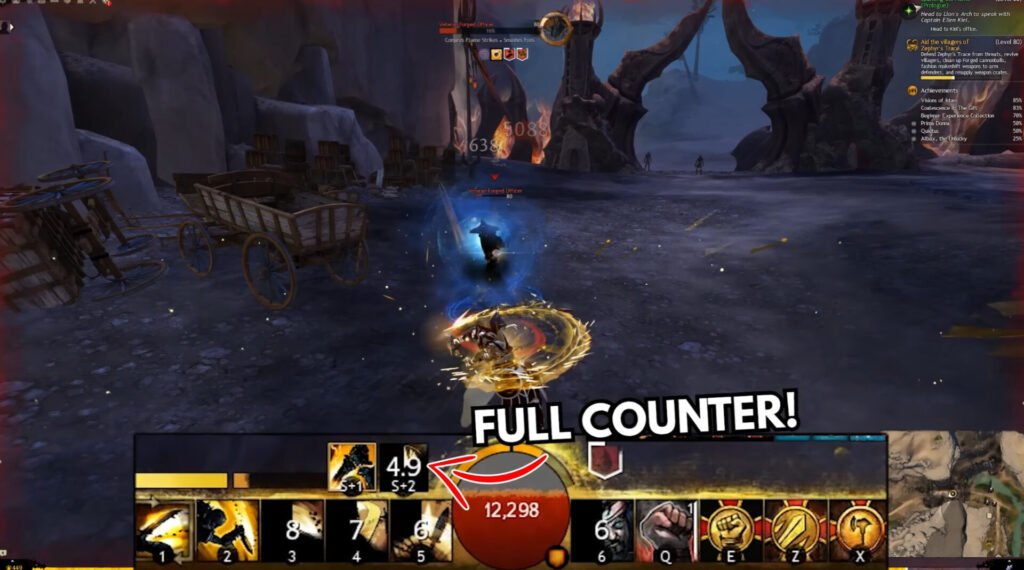
Bladesworn
The End of Dragons Expansion lets the Warrior unlock the Bladesworn Elite Specialization.
This Elite Specialization lets the warrior perform stronger burst attacks at the cost of speed.

The Bladesworn lets you use an off-hand pistol. This pistol allows for fast attacks in between your regular attacks.
The Bladesworn Elite Specialization also replaces the Warrior’s Adrenaline for Flow and gives access to the Gunsaber. Whenever a Bladesworn enters combat, it will generate flow.
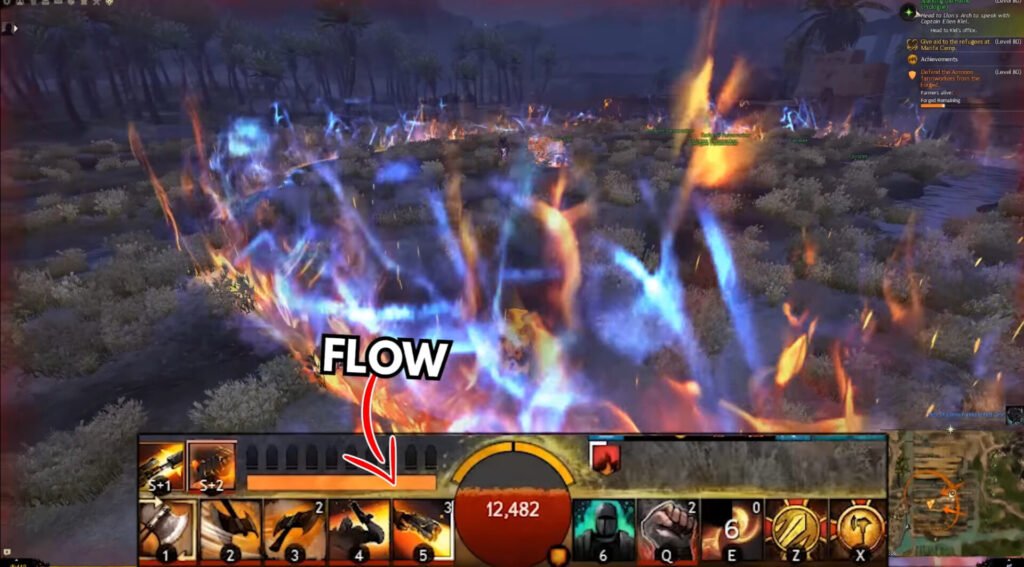
Once a warrior gains more Flow, it can be used to activate the Dragon Trigger. The Dragon Trigger converts Flow into charges and these are used to perform a slow but devastating attack. Next to that the Gunsaber gives the Warrior 5 extra skills for great AoE damage.

Looking for a 60 second explanation of the Bladesworn? Check out the video below!
Guardian
Let’s move on to the Guardian profession. The Guardian is another Heavy Armored profession that uses Holy and Light skills to damage foes or heal allies. You can compare a Guardian to Paladin-like classes in other games.
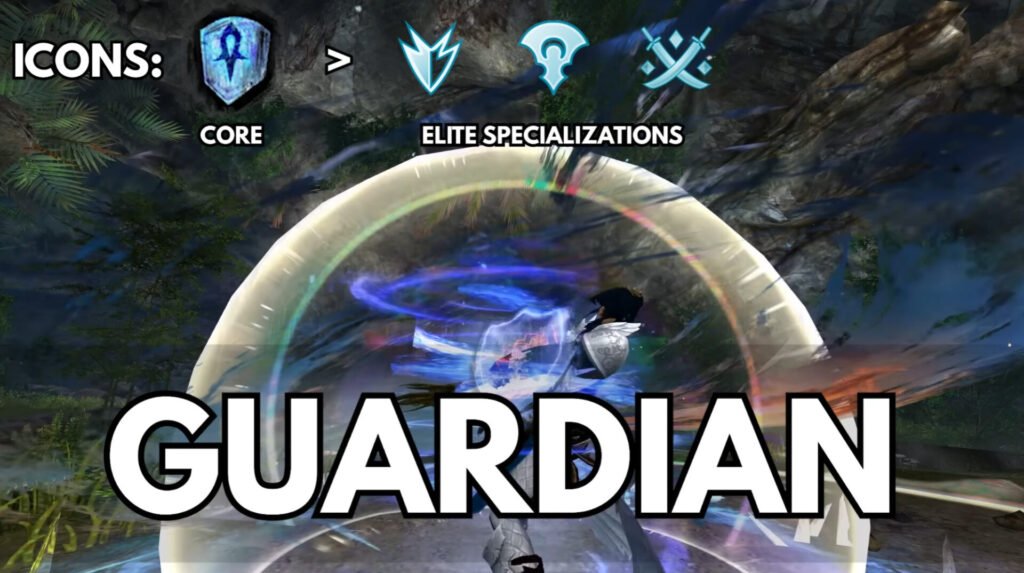
The Guardian’s unique profession mechanics are Virtues. Virtues give a Guardian passive bonuses over time but Guardians can also activate their Virtues for an instant effect.
The first Virtue, Virtue of Justice burns foes foes every few attacks. Activate this virtue to inflict burning on your next attack. The second Virtue, Virtue of Resolve passively regenerates your health. Activate it to heal yourself and allies instantly. Your third and last Virtue, Virtue of Courage, gives you an aegis periodically that blocks incoming attacks. Active the Virtue to instantly grant aegis to you and your allies.

Activating the Virtues puts them on a cooldown. When this happens, you can’t benefit from the Virtues’ passive effect as long as they are on cooldown.
Guardians can do a lot of damage while they also have a lot of skills to protect themselves and allies with. Therefore, the Guardian is a great profession to start playing Guild Wars 2
Whenever a Guardian unlocks an Elite Specialization, their Virtue’s active effects change but their passive effects remain the same.
Dragonhunter
If you have the Heart of Thorns Expansion, The Guardian can unlock the Dragonhunter Elite Specialization. This Elite Specialization allows for a more stationary, bait and lure, type of approach.

The Dragonhunter can also use a Longbow in combat. This allows for a more long-range playstyle for the melee focused Guardian.

The Guardian’s Virtues also change when using the Dragonhunter Elite Specialization.
Your first Virtue now hurls a burning spear at your foe. This tethers you to your foe and they receive negative effects periodically. Your second Virtue now lets you leap to the target area.
On impact, you heal allies in that area. Your third Virtue still grants aegis but also blocks incoming attacks in front of you. However, you are still vulnerable from the sides and from behind.
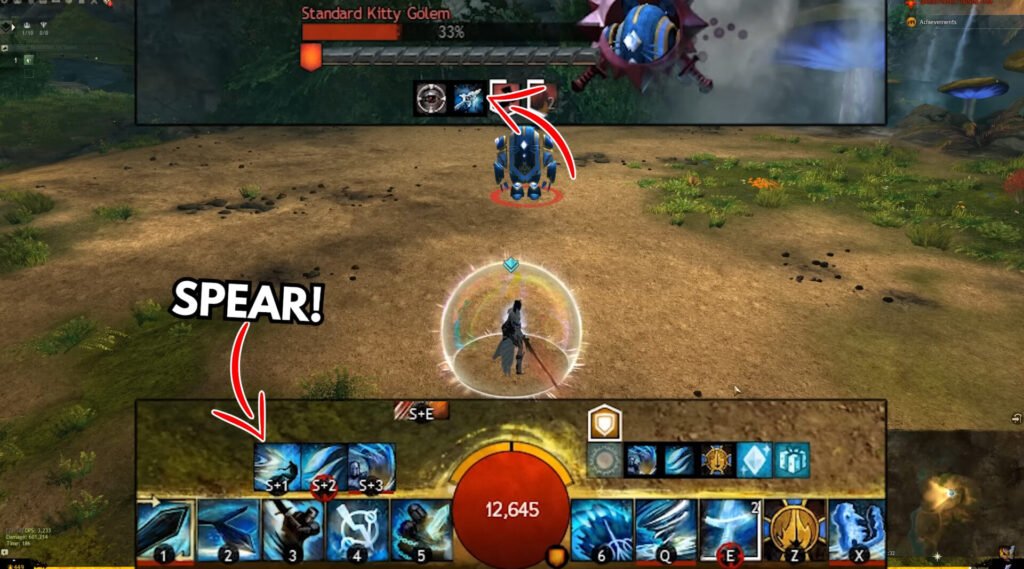
Firebrand
With the Path of Fire expansion, the Guardian can unlock the Firebrand Elite Specialization.
This Elite Specialization is great if you want to support your allies but also want to damage your foes!

The Firebrand can also use an Axe in combat and its Virtues’ active effects have changed once more. The axe allows the Firebrand to play more stationary and supportive. But don’t let that fool you, the axe has great damage over time effects too.
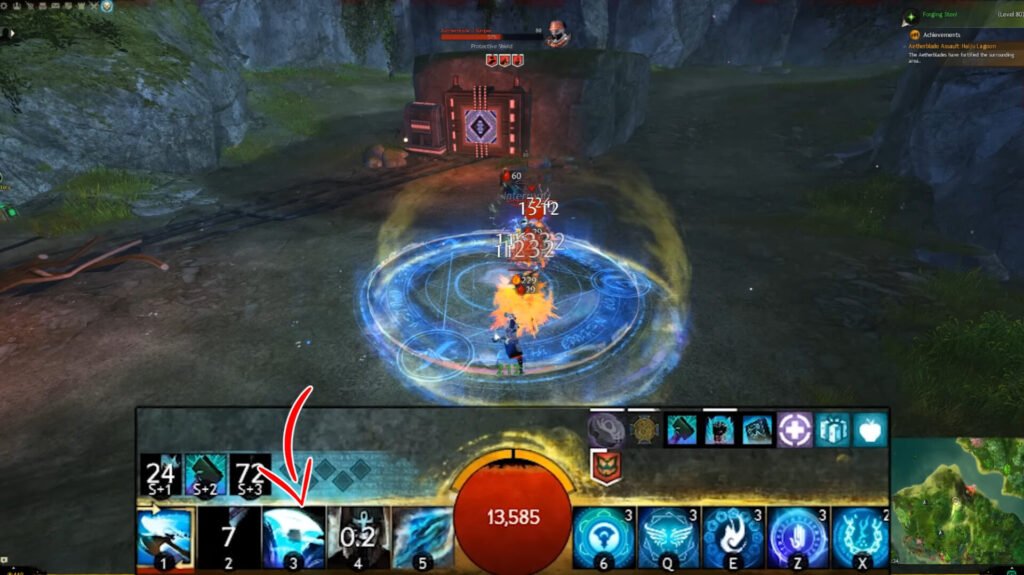
Your Virtues now open a tome of lore that give the Firebrand access to new skills. Your first Virtue now opens a Tome that grants you new skills to damage foes. The second Virtue opens a Tome that grants skills to heal you and your allies. The third Virtue now opens a tome to protect allies and provide them with boons.

The Firebrand is able to use mantras to heal and support allies or damage foes. These mantras can be used multiple times before they go on cooldown.
Willbender
The End of Dragons Expansion lets the Guardian unlock the Willbender Elite Specialization.
This Elite Specialization turns the slow, protective Guardian into a fast moving, self centered soldier.

The Willbender can now use an off hand sword. The sword skills allow for more fast paced attacks and more mobility.

The Willbender Flames replace your Virtue’s active effects and leave a trail of flames. Your first Virtue now lets you dash towards an enemy which leaves a trail of damaging flames. Your second Virtue now lets you dash in your preferred direction and leaves a trail of damaging flames that can also heal you. Your third Virtue lets you shadowstep a short distance and leaves a circle of damaging flames. Once you land, you gain a short effect that grants you boons whenever you strike foes.

Revenant
The Revenant is the only profession in Guild Wars 2 that requires an expansion to play.
In order to play it, you either need the Heart of Thorns, Path of Fire or End of Dragons Expansion.

The Revenant is yet another Heavy Armored profession. The Revenant is a profession that uses the powers of the mists to deal damage to foes or support their allies. In order to do so, Revenants channel legends of the past that all have their own set of skills. Some legends are better at dealing damage while others are great at supporting your allies.
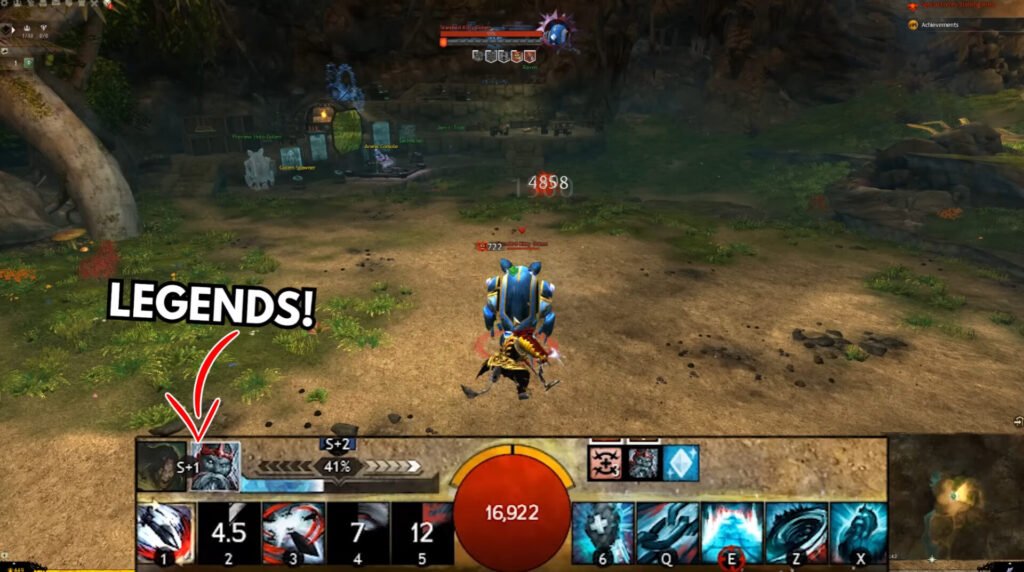
A Revenant can commune with two Legends but can only channel one at same the time.
This means that you can have two legends in combat and you can switch back and forth between those two legends.
A Revenant uses energy to channel the powers of these Legends. This energy is displayed in a bar above your skillbar. Once your energy runs out, you have to wait until it has regenerated or you can swap to your other legend.

The usage of the two legends and the energy system might be less straightforward for new players. Therefore, the Revenant can be a bit harder to get into if you are completely new to Guild Wars 2. But if you like it, give the Revenant a chance!
Herald
If you own the Heart of Thorns Expansion, the Revenant can unlock the Herald Elite Specialization. The Herald gives the Revenant more defensive and supportive abilities to survive and support allies.
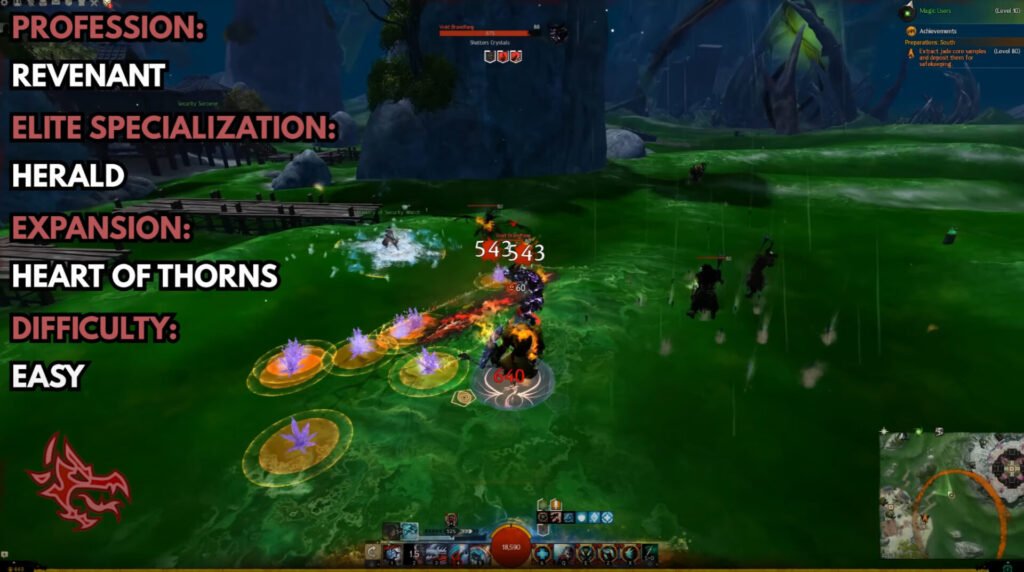
A Herald can now wield a Shield in combat. The shield skills are great because they can provide boons and heal allies but it can also be used to protect yourself.

As a Herald, the Revenant can channel with Legendary Dragon; Glint. Glint gives you access to Facets to support your allies.
Facets can only be used when channeling with Glint. Whenever a Facet is activated it pulses supportive boons to nearby allies while it drains your energy. When you activate that same Facet again, you can use it to deal damage and inflict negative to your foes.

Renegade
The Path of Fire expansion let’s the Revenant unlock the Renegade Elite Specialization. The Renegade is great at dealing damage and can provide specific boons to allies. As a Renegade you are able to invoke the powers of the Legendary Charr, Kalla Scorchrazor. Kalla let’s the Regenade empower allies, bomb their foes and reduce the cooldown of your abilities and the abilites of your allies.

The Renegade can also use a Shortbow in combat. This allows for mid-range combat and damage.

The Renegade can also summon Kalla’s Warband from the mists to aid you in combat.
These Warband members deal damage to foes but can also provide some boons to you and your allies.
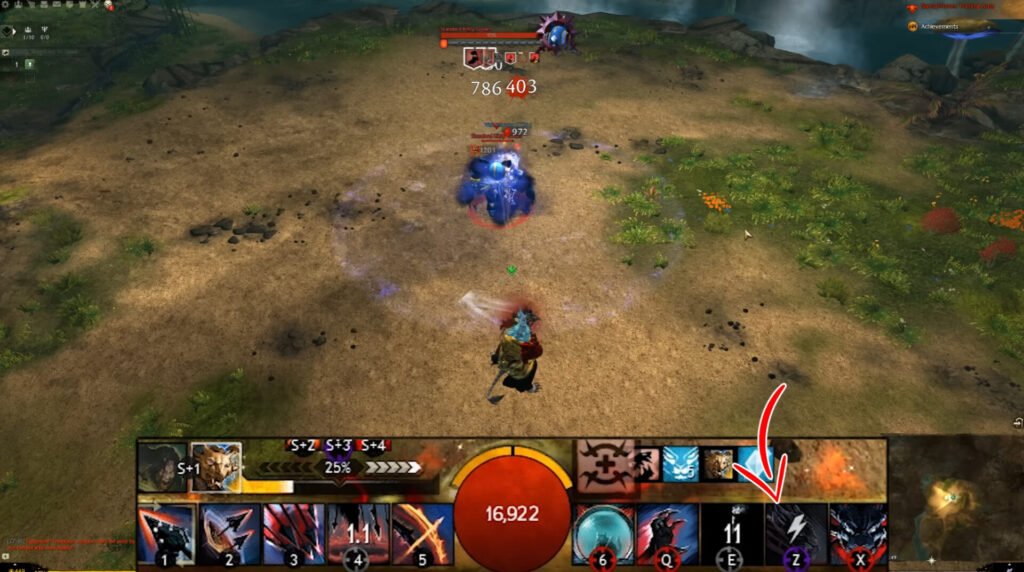
Vindicator
The End of Dragons Expansion lets the Revenant unlock the Vindicator.
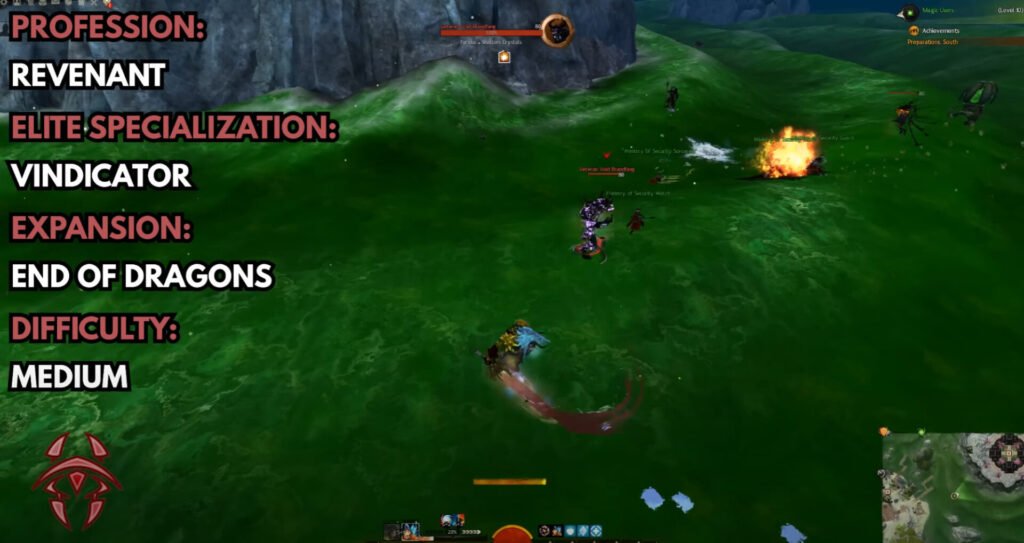
The Vindicator can use a Greatsword in combat. This allows the Vindicator to deal great damage from up close.
A Vindicator gains access to the Legendary Alliance Stance which let’s channel the powers of Saint Viktor and Archemorus. So, the Legendary Alliance Stance channels two Legends instead of one. Using the skills of Saint Viktor let’s the Vindicator be more supportive and defensive.
This while the Skills of Archemorus are all offensive abilities.

Additionally, the Vindicator’s dodge is replaced by a leap. This leap leaves you up in the air for a brief period and then lets you crash down dealing damage on impact.
Ranger
The Ranger is a Medium Armored profession that uses the power of nature and other survival tactics to deal damage. Of course, a Ranger can also use bows in combat along with other weapons. A Ranger can be compared to Rangers or Archer-like classes from other games.

The Ranger’s unique profession mechanic is the Ranger’s pet. Your pet aids you in combat and even has its own ability. You can even have a second pet on stand-by and switch to another one in combat.
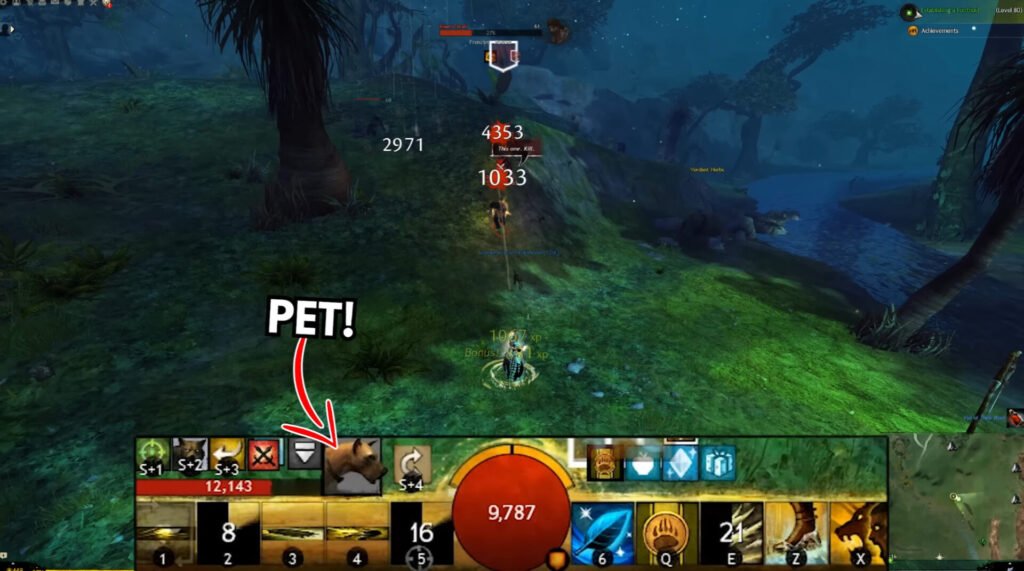
A Ranger and their pet fight as one, this means that some of your skills benefit you and your pet. You can tame and collect more pets as you venture through the world. Each pet family has their own ability. So, it is smart to use a pet that fits your current play style or situation.
Because of this, a pet makes the Ranger a great profession to start playing Guild Wars 2 with.
Your pet can deal damage but also take damage for you! This gives you some more time to adapt to your current situation.
Druid
The Heart of Thorns expansion allows the Ranger to use the Druid Elite Specialization.
This Elite Specialization is often used to heal and support allies but can also deal a good amount of damage.
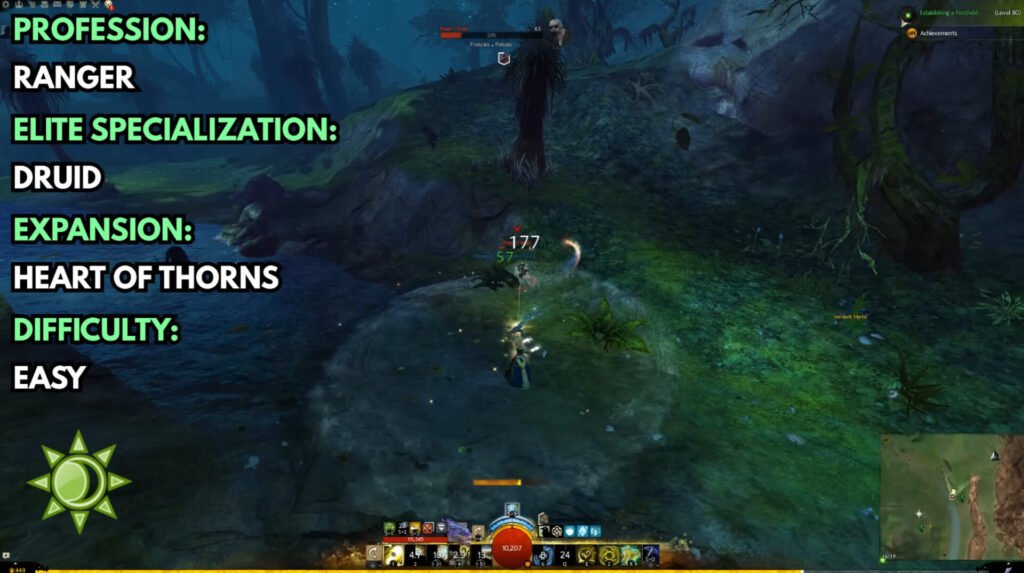
The Druid uses a Staff to heal allies and cleanse them from any negative effects. Whilst healing allies with a staff you gain Astral Force.

This Astral Force fills up a bar above your health bar. When this bar is full you can enter the Celestial Avatar Form. The Celestial Avatar Form gives the Druid a new array of skills to quickly and effectively heal your allies.

Also, the new Glyphs that the Druid gains access to change based on your current state. If you are not in the Celestial Avatar Form they deal damage to your foes. If you are using the Glyphs while in Celestial Avatar Form, they heal or support your allies!
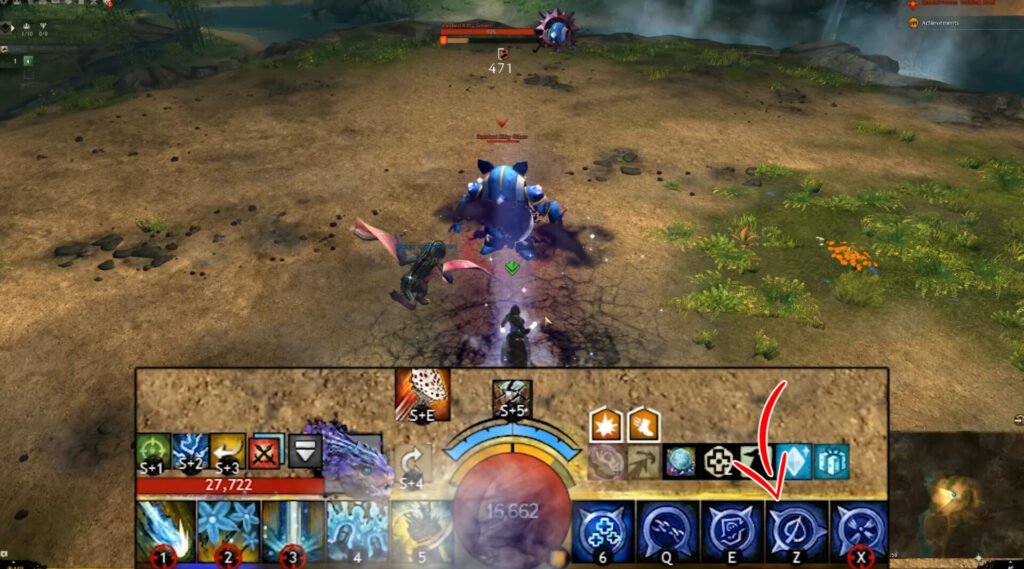
Soulbeast
If you own the Path of Fire Expansion the Ranger can unlock the Soulbeast Elite Specialization.
This Elite Specialization is often used to inflict a great amount of damage to your foes.
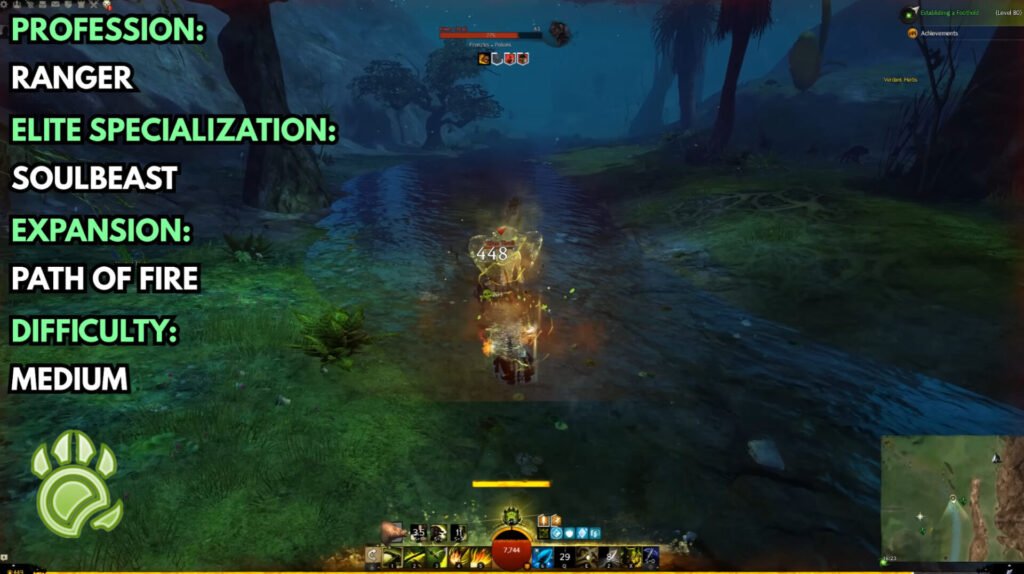
A soulbeast is able to wield a dagger in their main hand. This allows for a fast paced combat style and it inflicts damage over time effects to your foes.
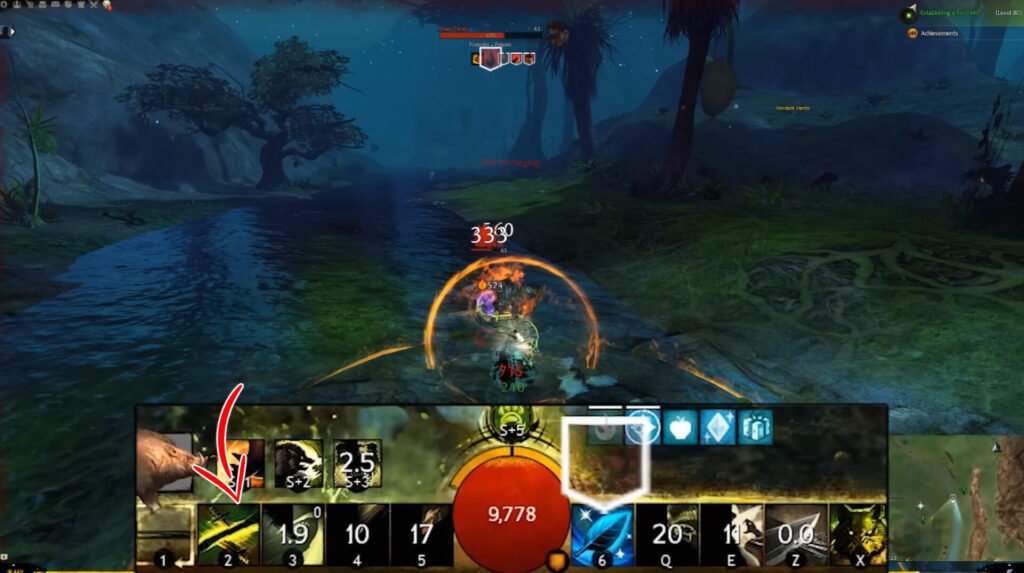
As a Soulbeast, the Ranger is now able to merge with their pet. Once a Soulbeast merges with their pet they’ll go into Beastmode. Whenever a Soulbeast is in Beastmode the effects of certain attributes are significantly increased. The Soulbeast will also gain a number of new skills. These skills are based on the type of pet you merge with.

Also, the Soulbeast’s stances are great since they instantly give you a number of bonuses while in combat.
Untamed
The End of Dragons Expansion allows the Ranger to unlock the Untamed Elite Specialization.
This Elite Specialization highly benefits from foes that are knocked down, stunned or any other form of crowd control.

An Untamed can now use a hammer in combat. This weapon can disable foes or deal increased damage whenever foes are disabled. This is based on whether an Untamed is unleashed or not.

Whenever an Untamed unleashes, their pet and the Untamed gain a number of new abilities. Your pet will gain abilities that inflict more damage to foes whenever they are disabled. And the untamed gains a number of abilities to disable them with. You can either untame the Ranger or the Ranger’s pet. Based on what you untamed, you gain different skills. You can easily switch back and forth between untaming the Ranger or the pet.
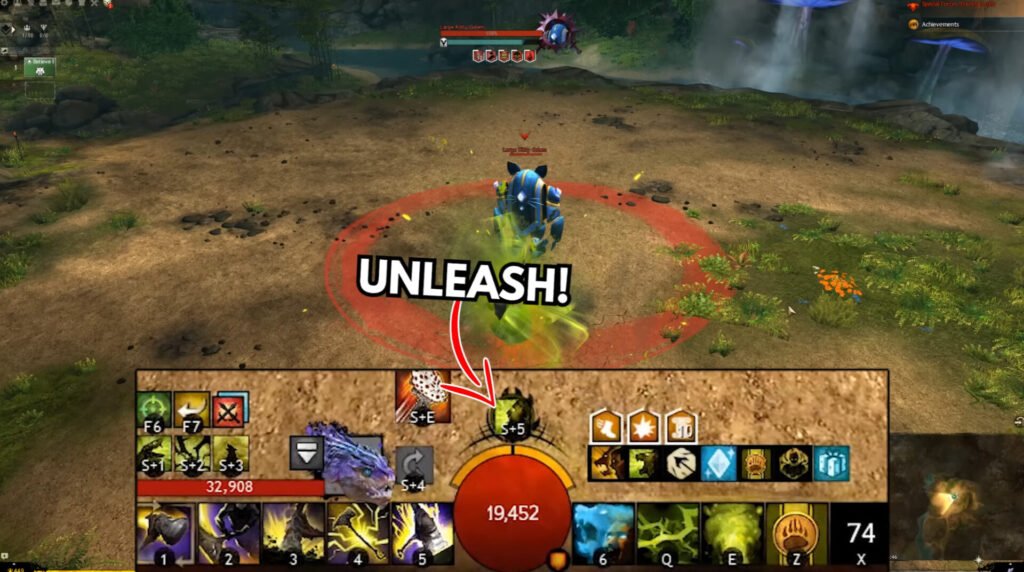
Thief
Moving onto the Thief, the next Medium Armored profession on the list. As the name suggests, the Thief uses techniques to steal from foes and uses tricks to deal damage to foes. A thief can be compared to Rogues or Assassins in other games.
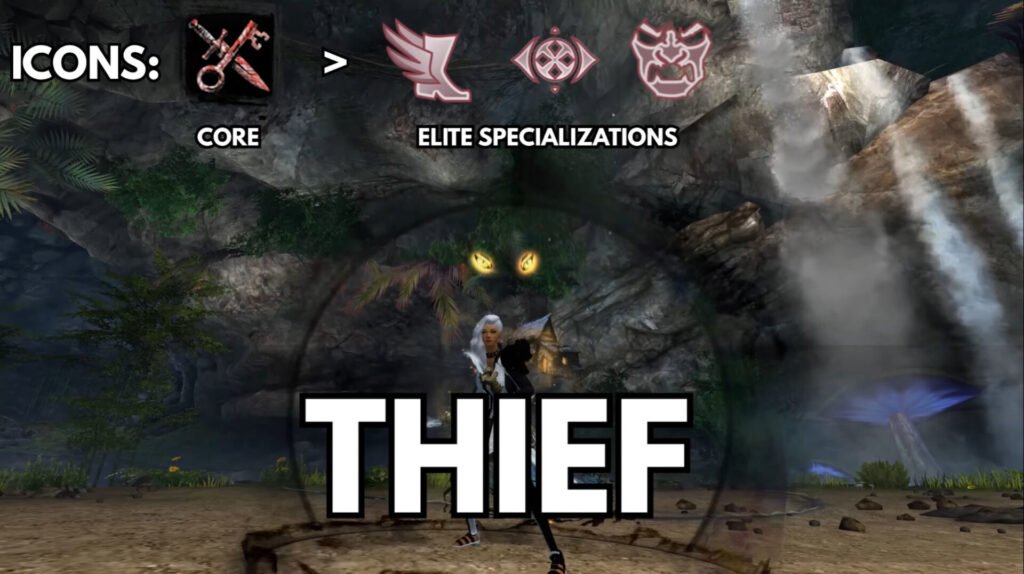
The Thief has two unique profession mechanics. A thief has a Steal skill which you can use to steal items from your foes. Whenever you steal something, you gain an item that you can either consume for boons or use to deal damage. The effects of Steal can be enhanced by selecting specific traits.

Another unique mechanic of the Thief is Initiative. The Thief is unique since it has no cooldowns on their weapon skills. Instead, a Thief uses Initiative to perform skills. Initiative is shown above your skill bar and replenishes every second. Since the Thief has no cooldowns and uses Initiative instead, it allows them to attack in rapid succession.

Thieves can also pop in and out of stealth to surprise or hide from foes. Next to that, Thieves can also shadowstep to quickly engage or disengage from foes.

Thieves might be a bit harder to get into for new players. However, if you played Rogue-like classes before or really dig their playstyle, you must give the Thief a Shot.
Daredevil
If you own the Heart of Thorns Expansion, the Thief can unlock the Daredevil Elite Specialization.
This Elite Specialization can deal a great amount of damage and it also increases the mobility of the Thief even further.

As a Daredevil, the Thief is able to use a Staff. You don’t use this staff to deal damage from afar. Instead you use it for rapid melee attacks.

As a Daredevil, you are able to Dodge three times instead of the regular two times. The extra Dodge makes the Daredevil even more mobile than the thief. You can even attach additional effects to these dodges by selecting specific traits. For example, there are traits that increase your damage after you successfully dodge!
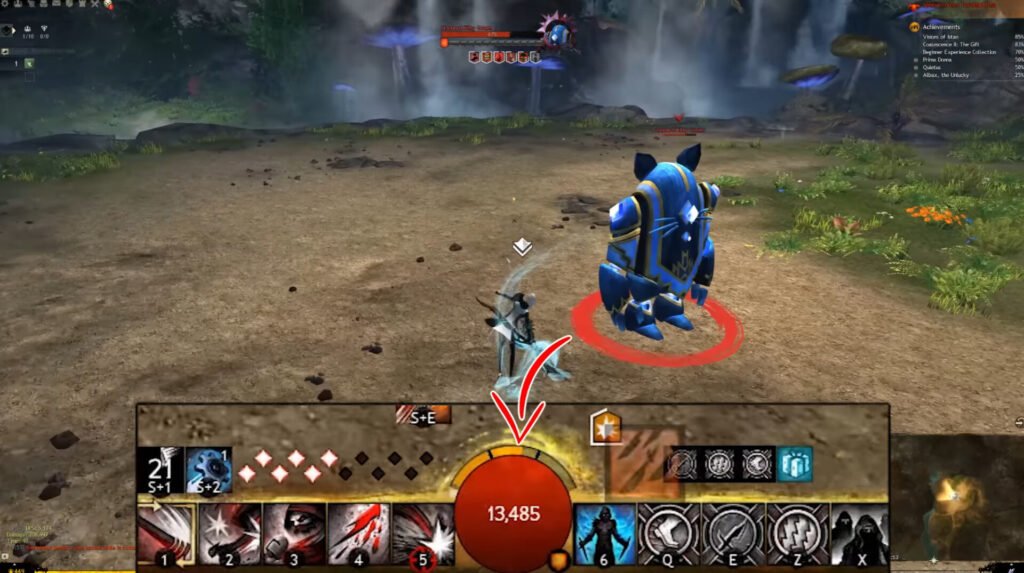
Deadeye
The Path of Fire Expansion allows the Thief to unlock the Deadeye Elite Specialization. This Elite Specialization is stationary and deals damage from a distance. The Deadeye takes the role of a Sniper and can still deceive foes or reposition themselves.

The Deadeye can use a Rifle in combat. When using a Rifle, a Deadeye can walk around freely and shoot foes on the go. However, you can also choose to kneel which gives you a number of new skills which increases your ranged damage.

As a Deadeye, your Steal Skill is replaced by Deadeye’s Mark. Deadeye’s Mark is used on your foes to generate malice. Malice is shown above your health bar and increases the damage of your stealth attacks. The more Malice you have, the more powerful your stealth attacks.

Specter
The End of Dragons Expansion changes the role of the Thief quite a bit. If you own the End of Dragons Expansion, a Thief is able to unlock the Specter Elite Specialization.
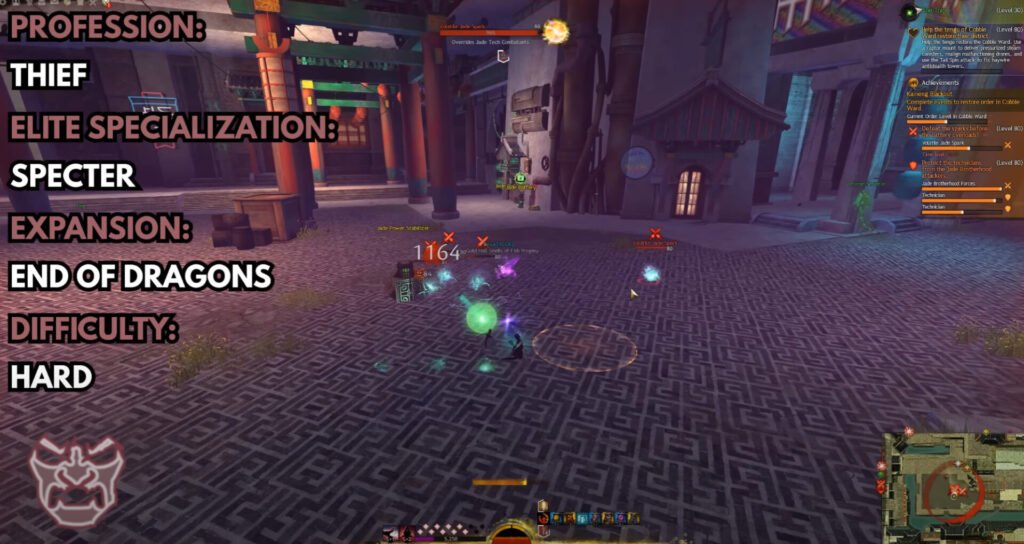
This Elite Specialization can deal a good amount of damage to foes but can also support allies. That’s something a Thief could not do before.
A Specter is able to use a Scepter in combat. The Specter’s scepter skills have two purposes.
They can deal damage to your foes or heal and support your allies. You choose.

Your Steal Skill also has been replaced by Siphon. Siphon can be used on foes or allies.
You can steal from foes to gain Shadow Force. But you can also use it on allies to give them a barrier and protect them from harm. When you use it on an ally, you also tether them to you.
It creates a link between you and them which you can benefit from in Shadow Shroud.
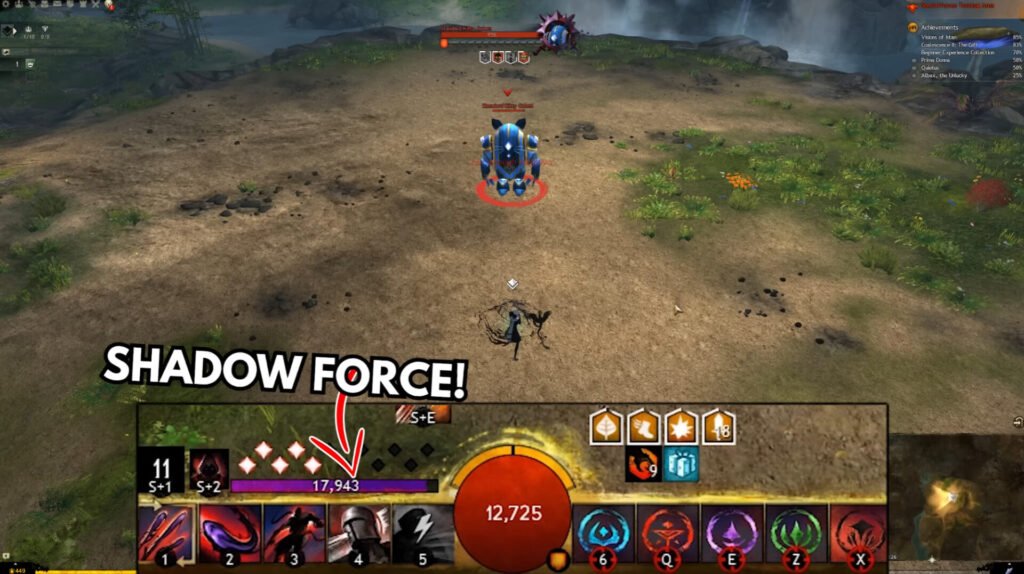
The Specter’s Shadow Shroud is fueled by Shadow Force which is gained by using your skills.
It works similarly to the Necromancer Death Shroud which we’ll discuss later in the video.
The Shadow Shroud is a form that gives you a number of new skills. These new skills grant boons to allies whenever you attack an enemy.

Engineer
The last Medium Armored profession on this list is the Engineer. The Engineer can be compared to classes that use technology in other games. For example, they use bombs, a flamethrower, granades, pistols, turrets, and more!
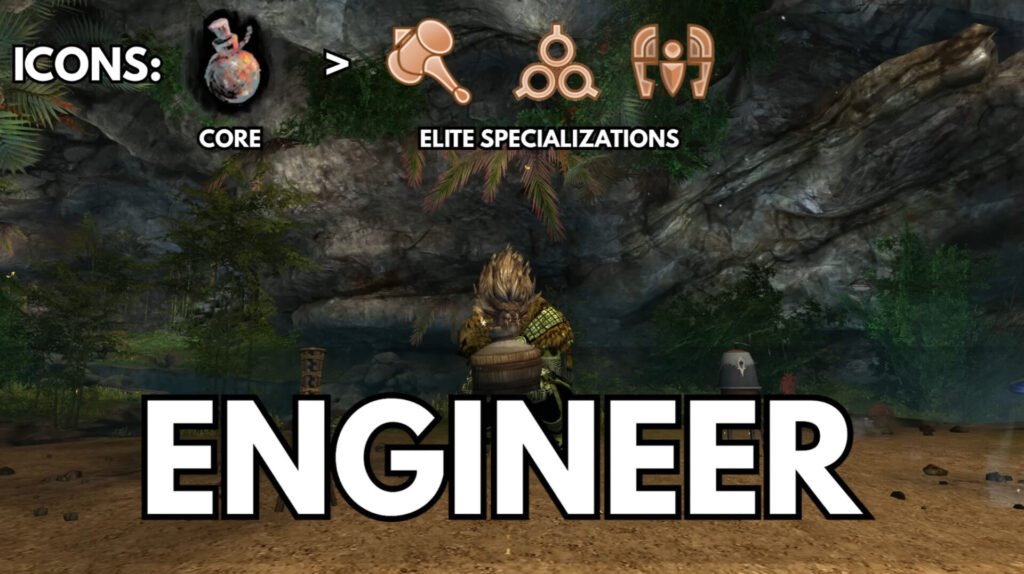
The unique profession mechanic of the Engineer is the Toolbar. The Toolbar is displayed above your weapon skills and contains a number of extra skills. These skills change based on your selected weapon kit. I can for example, select Flamethrower as a Utility Skill, and I would then
gain Toolbelt skill that inflicts burning without the use of a flamethrower.

The weapon kits and the toolbar skills offer a wide variety of offensive or defensive abilities.
This gives Engineers countless opportunities to play their class. However, this can be overwhelming to new players who just started playing Guild Wars 2. But don’t let that stop you from playing the Engineer.

Scrapper
The Heart of Thorns Expansion lets the Engineer unlock the Scrapper Elite Specialization. This Elite Specialization is great at dealing damage but can also support your allies.

The Scrapper is able to wield a Hammer in combat. The hammer gives the Engineer some defensive ability but it also has a powerful stun.
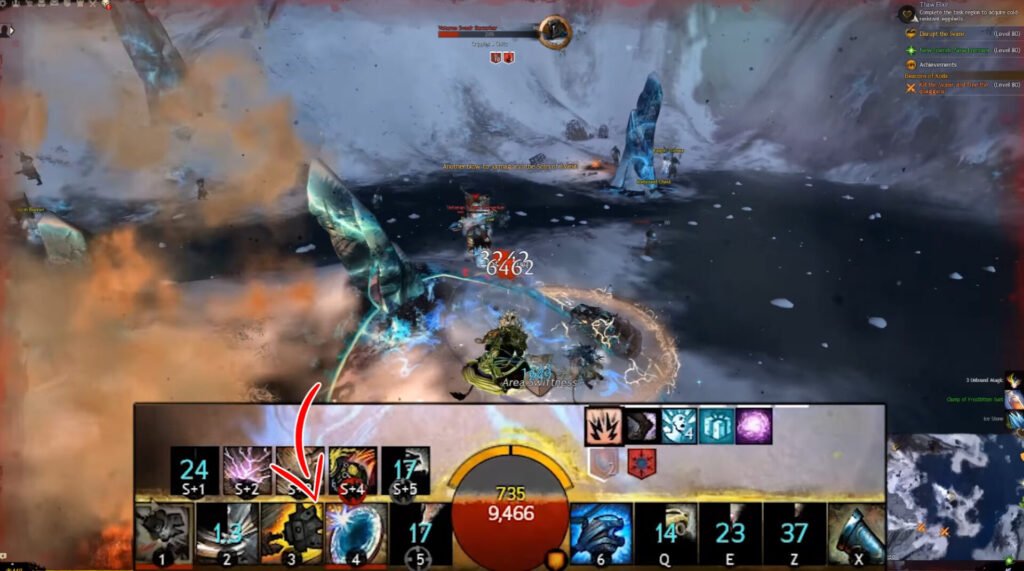
The unique profession mechanic of the Scrapper are its Gyros. The Scrapper’s Gyros can be chosen and summoned through your utility skills. Most of these Gyros give beneficial effects to you and your allies. You can use a Gyro’s utility skill for an effect but you can also trigger its toolbar skill for another effect.

Holosmith
The Path of Fire Expansion lets the Engineer unlock the Holosmith Elite Specialization. This Elite Specialization is great at dealing damage and unlocks a new form for the Engineer.

The Photon Forge is a Holosmith’s special form that grants a new set of skills. When you use skills in the Photon Forge, you generate heat. If your heat reaches the maximum, your Photon Forge Overheats and you cannot use it for a brief period.

The Holosmith is also able to wield a sword in combat. The sword’s abilities become more effective the more heat you have generated. Also your new Exceed Skills benefit from this heat.
So, the more heat you have accumulated, the more effective your skills become!

Mechanist
The End of Dragons Elite Specialization lets the Engineer unlock the Mechanist Elite Specialization. This Elite Specialization summons a Jade Mech that is good at dealing damage but can also support your allies.
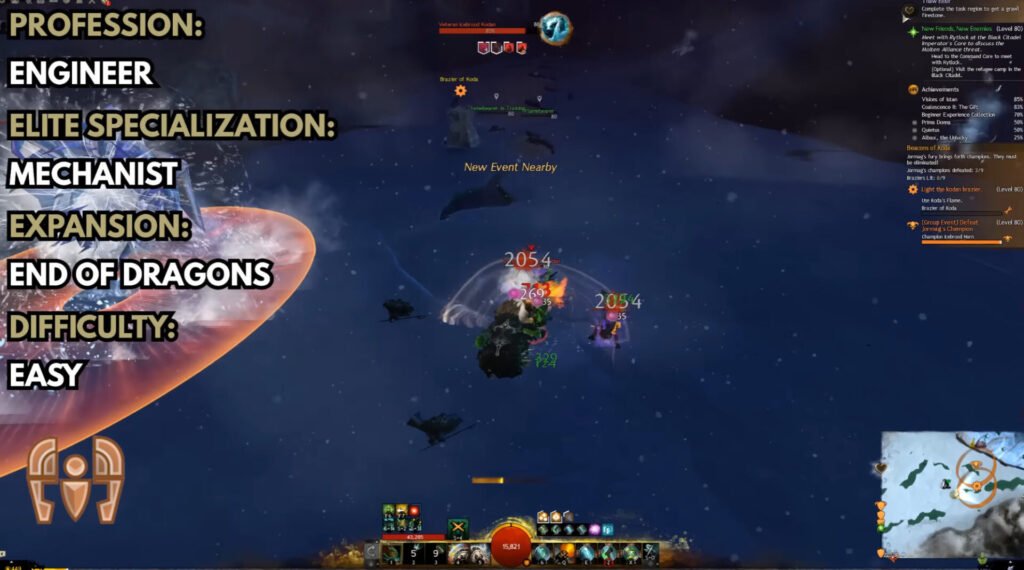
The Mechanist is able to use a Mace in combat. A mace is used to damage or stun foes.
But the mace can also support allies in combat with boons when you successfully land a few hits.

The Jade Mech replaces the Toolbar skills with Mech commands. These commands instruct your Jade Mech to perform certain actions. These Mech commands change based on the traits you’ve selected. Some traits give the Jade Mech damaging abilities, others give supportive abilities instead.
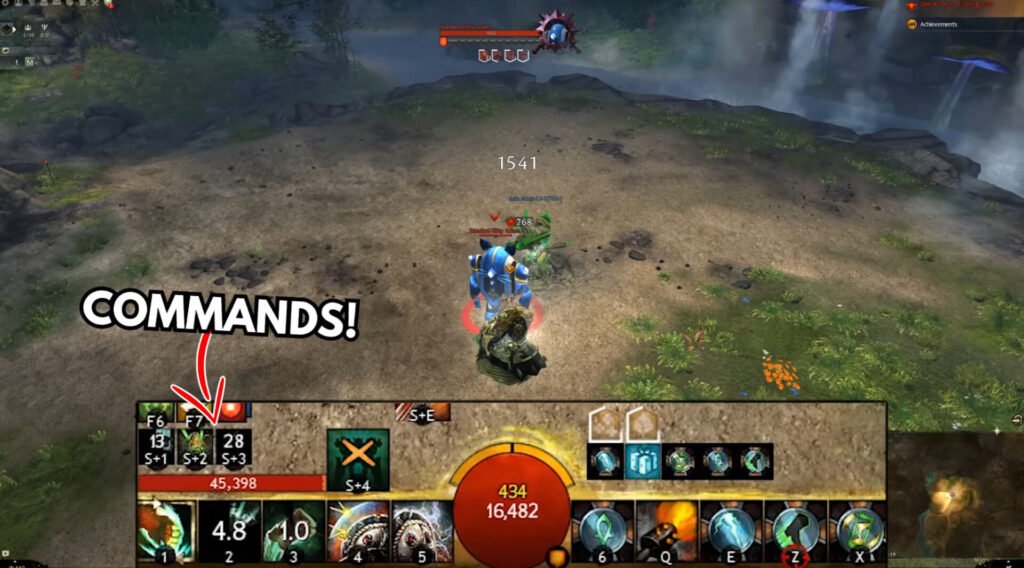
The Signets the Mechanist gains access to passively increase the effectiveness of the Mechanist and the Jade Mech. The Mechanist can activate the signets for an instant effect but this puts their passive bonuses on a cooldown.
Necromancer
The first Light Armored profession is the Necromancer. The Necromancer is a spellcaster that uses dark and blood magic. Necromancers can steal or corrupt boons and turn them into negative effects. Necromancers in Guild Wars 2 can be compared to Warlocks or Summoners in other MMO games.
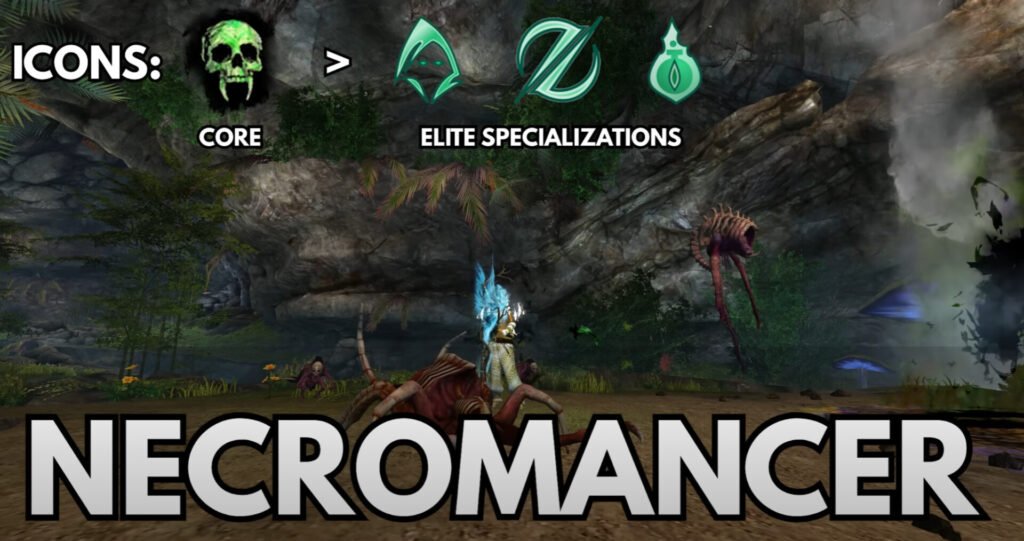
The unique profession mechanic of the Necromancer is the Death Shroud. Whenever something dies near the Necromancer or they use specific skills, a Necromancer gains Life Force. This Life Force is used to fuel the Death Shroud. You can find your accumulated Life Force above your skill bar.

When you enter the Death Shroud you gain a number of new skills to deal damage to your foes with the Life Force you collected. When the Necromancer enters Death Shroud, they will also gain an extra health bar based on the Life Force they’ve collected. So, entering Death Shroud can save you if you are in a dire situation.
A Necromancer can also summon minions to aid them in combat. Minions follow the Necromancer around and when summoned, have a special skill to heal the Necromancer or deal damage to their foes.

The Necromancer is a great profession for new Guild Wars 2 players. It has so much survivability with the Death Shroud and the Minions can be used as shields to prevent them from taking damage. Definitely try this profession if you are new to the game.
Reaper
If you picked up the Heart of Thorns Expansion, the Necromancer can unlock the Reaper Elite Specialization. This Elite Specialization is great at dealing damage while having great survivability.

The Reaper can use a Greatsword in combat. The greatsword has great crowd control and damaging abilities.

The Reaper Shroud is similar to the Death Shroud. You still get an extra health bar and you can still fuel the shroud with Life Force. However, the Reaper Shroud Skills are more focused on dealing AoE damage to your foes. This makes it really useful in Open World PvE content.

Combine this with the AoE skills you can find on the Greatsword and you’re in for a good time.
Next to that, the Reaper also gains access to Shouts. Shouts let your character chant a phrase that has immediate effect. These shouts are basically instant cast skills that can buff you or negatively affect your foes.

Scourge
The Path of Fire Expansion lets the Necromancer unlock the Scourge Elite Specialization. This Elite Specialization is great at inflicting damage over time effects but Scourges can also support their allies.

The Scourge can wield a Torch in their off-hand. The Torch lets the Scourge inflict damage over time abilities and gives them access to a powerful crowd control skill.

In contrast to other Necromancer Elite Specializations, the Scourge does not have a Shroud.
Instead it uses Sand Shades. Sand Shades are summoned at your preferred location and deal damage to foes but can also provide Barrier to allies. Barrier protects your allies from harm.
The Sand Shades also have skills tied to them which you can use at the cost of Life Force.

Harbinger
Moving on to the last Elite Specialization for the Necromancer. The End of Dragons Expansion lets the Necromancer unlock the Harbinger Elite Specialization.
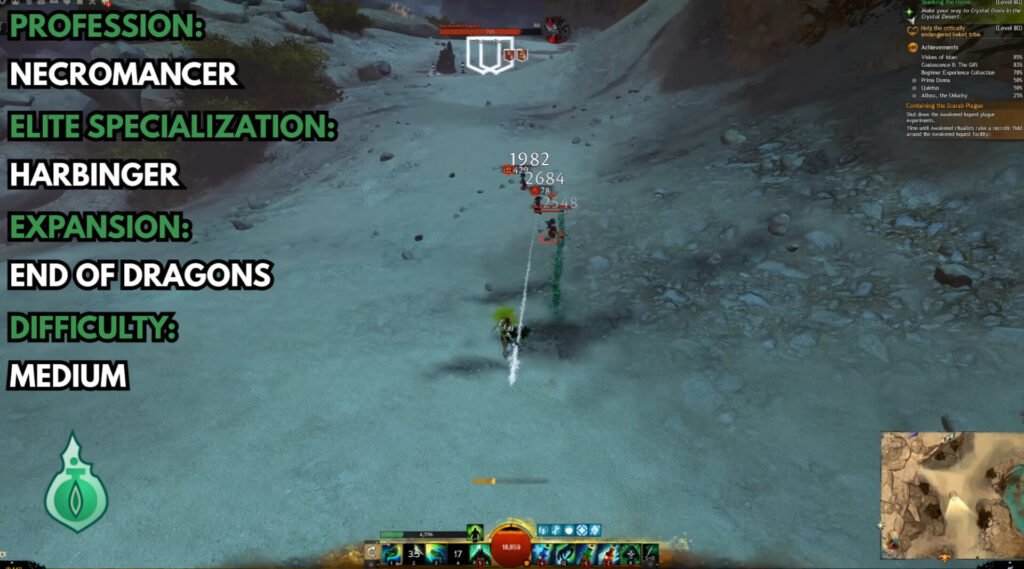
This Elite Specialization can deal damage at the cost of their own health but can also support their allies.
A Harbinger can use a Pistol in their main hand. The Pistol can quickly inflict damage over time effects to foes and has a crowd control ability.

The unique profession mechanic for the Harbinger is the Harbinger Shroud. The Harbinger Shroud functions like the other Necromancer shrouds. However, the Harbinger Shroud gives the Necromancer a number of mobility and damaging skills. But more importantly, while in Harbinger Shroud, a Harbinger will accumulate Blight over time. Blight is an effect that reduces your maximum health. So, staying in the Harbinger Shroud for a while can make you more vulnerable.

However, Blight can be used to your advantage by selecting specific traits. There are traits that increase your damage or increase your healing the more Blight you have accumulated.

The Harbinger can also use Elixirs in Combat. When you throw them at your foes it will damage them and inflict a negative effect. When you stand in the impact area of an Elixir, you will gain Blight. Depending on your play style, you can stand in the impact area of an Elixer to accumulate more Blight or be safe and just throw them from a distance.
Elementalist
Let’s head to the next Light Armored profession on this list, the Elementalist. I’ve been playing this profession since the release of Guild Wars 2 back in 2012 and it’s still one of my favorites.
The Elementalist uses the power of the Elements to deal damage to foes or heal allies. Elementalists share similarities with Mages and Shamans from other games.

The unique profession mechanics of the Elementalist are the elemental attunements. An Elementalist can attune to different elements that change their weapon skills based on the attuned element. Fire gives you heavy damage and burning abilities Water slows foes and supports allies. Air gives you heavy damage and control abilities. And Earth gives you damage over time and protection abilities.
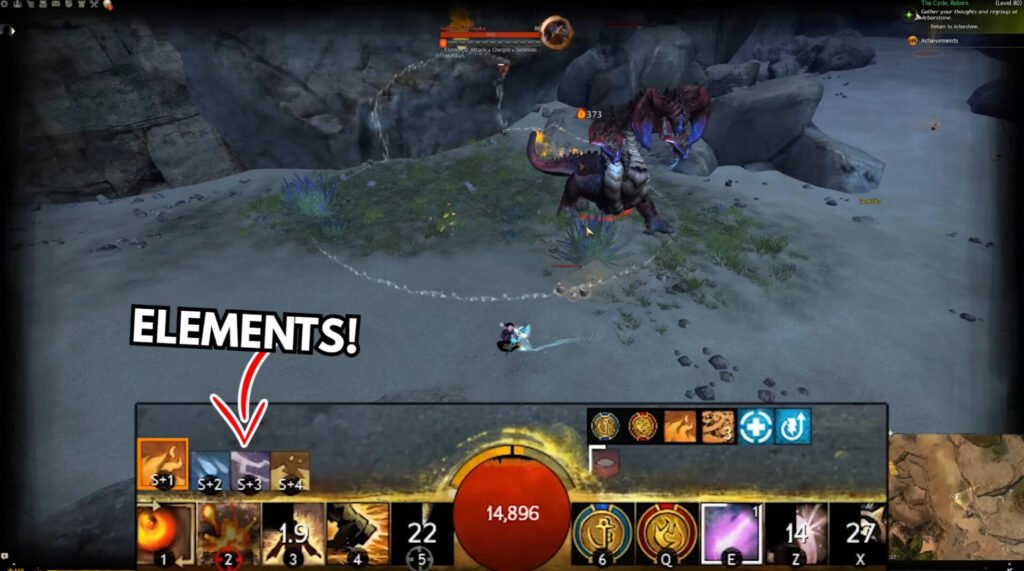
The Elementalist offers endless possibilities to play. Every element gives you new weapon skills to play around with. The Elementalist, like all other professions or classes, has access to different weapon sets. And each weapon set gives the Elementalist new skills based on their selected attunement. And thus this gives the Elementalist access to 20 skills at the same time.
Therefore, it might not be the best pick for newer players. But don’t let that stop you. The Elementalist was my first profession and it’s still my main character to this day!
Tempest
The Heart of Thorns Expansion lets the Elementalist unlock the Tempest Elite Specialization.
This Elite Specialization deals a good amount of damage while you are also able to support allies.

The Tempest is able to use a Warhorn in their off-hand. The Warhorn is great since it gives the Tempest more supportive and Crowd Control abilities.

The unique profession mechanic of the Elementalist is the Overload ability. When you stay in an attunement for a brief period, you are able to Overload that attunement. This Overload ability is a strong AoE skill that takes a few seconds to channel.

Overload Fire turns the Tempest into a fiery tornado that damages foes. Overload Water turns you into a bubble that heals allies and cleanses them from negative effects. Overload Air summons a lightning storm that damages foes. And Overload Earth damages foes and gives you protective boons.
Weaver
The Path of Fire Expansion lets the Elementalist unlock the Weaver Elite Specialization.
This Elite Specialization can deal a great amount of damage.

As a Weaver, you can wield a Sword in your main hand. The Sword gives the weaver more damage and mobility skills.
The profession mechanic of the Weaver is that you can now attune to two elements at the same time. For example, if you tap into the Fire attunement and then into the air attunement you get a new weapon skill. Your weapon skill bar will now have 2 fire skills, 2 air skills and a new skill in the middle that has attributes of both attunements. This new skill is called a Dual Attack.

This Elite Specialization adds even more skills to the Elementalist and is therefore hard to master. However, the damage output can be insane and therefore, it can be really satisfying to play the Weaver if you play it right.
Catalyst
Moving on to the last Elite Specialization for the Elementalist. The End of Dragons expansion lets the Elementalist unlock the Catalyst Elite Specialization.
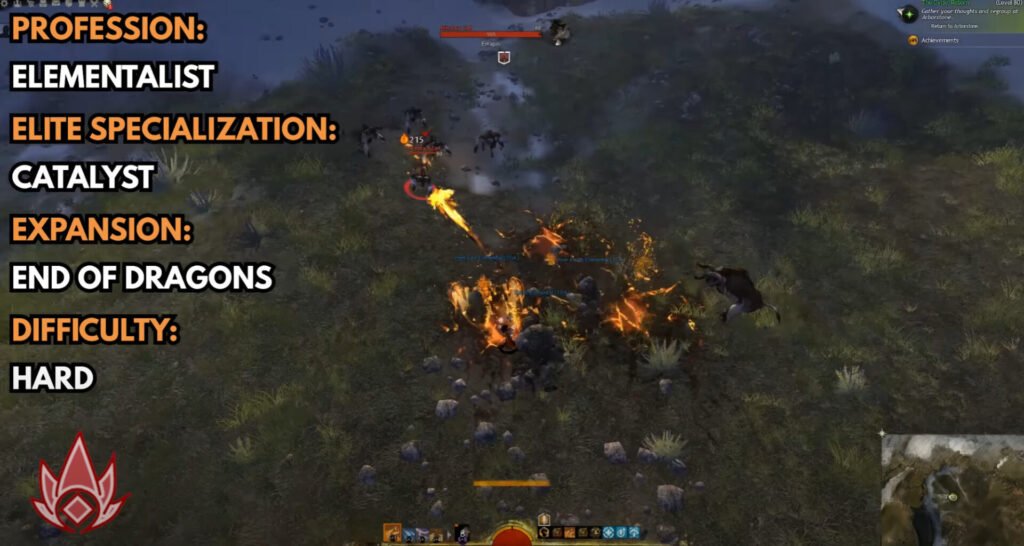
The Catalyst can use a Hammer in combat. The hammer allows for a more melee focussed approach for this spellcaster.

The Profession mechanic of the Catalyst is the Jade Sphere. You can summon a Jade Sphere to create a combo field and use it to grant boons to your allies. The effect of the Jade Sphere is based on the Catalyst’s current attunement. This can be helpful when you are playing with other people. Other players can use skills in your combo field and benefit from it.

If you want to know more about combo fields you might want to check out my Combat Video.
Mesmer
Moving on to the last Light Armored Profession in Guild Wars 2; The Mesmer. The Mesmer uses manipulations, clones, phantasms and deceptions to deal damage and deceive their foes.
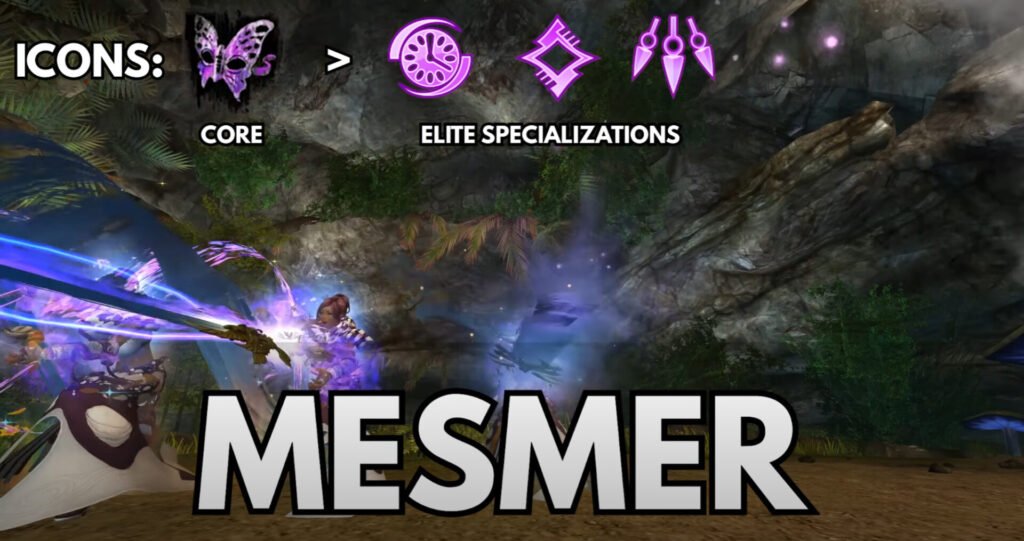
The unique profession mechanics of the Mesmer are Phantasms, Clones and Shatter Skills.
Phantasms and Clones are summoned by using your skills. Phantasms are transparent and deal a high amount of damage. You can easily distinguish them from the Mesmer itself. They’re transparent after all. Clones however are exact copies and are hard to distinguish from the Mesmer. Use Phantasms to deal damage to your foes and use Clones to deceive them!

After you have summoned a few Clones with your skills you are able to shatter them on your foes. You have a number of different shatter skills and each of them has a different effect.
The intensity of these skills is increased the more clones you have.

Your first shatter skill always damages your foes. The second shatter skill confuses your foes.
The third shatter skill stuns or dazes them. And the fourth skill makes you invulnerable for a brief period.

The Mesmer has an extensive amount of skills to deceive, evade and move around with.
This makes the Mesmer incredibly fun but also somewhat hard to play. However, in contrast to the Elementalist, the Mesmer does not have that many skills. So, it might be a bit harder to get into as a new Guild Wars 2 player but you’ll get the hang of it.
Chronomancer
If you picked up the Heart of Thorns Expansion, a Mesmer can unlock the Chronomancer Elite Specialization. The Chronomancer uses time and space to deal damage and support their allies.

The Chronomancer can use a shield in combat. This allows for a more defensive playstyle.

The unique profession mechanic of the Chronomancer is its ability to create a rift in space and time. Your shatter skills remain mostly the same. However, your fourth skill has been replaced by Continuum Split. Continuum Split destroys all your clones and creates a new timeline.
In this brief moment, you are able to use your skills as you normally would. When the Continuum Split effect expires, you return to your previous location, health, endurance and skill recharges.

When you use Continuum Split it’s smart to use skills that have a long cooldown. So, when the effect expires you can use them again!
Also, the Chronomancer can use wells that reduce the recharge of your and your allies skills.
And these wells also increase their spellcasting and attack speed. A true master of time if I’d so!
Mirage
Once you have the Path of Fire Expansion, the Mesmer can unlock the Mirage. The Mirage allows for a more deceptive and ambush style of play.

As a Mirage you can wield an Axe in combat. The Axe skills inflict damage over time effects to your target but are also used to deceive your target.

The unique mechanic of the Mirage is the Mirage Cloak. When a Mesmer uses the Mirage traitline it loses the ability to dodge. Instead, you will gain a Mirage Cloak when you dodge. You won’t move away from your target as dodging normally would. But instead gain a brief window where the Mirage evades attacks and gains an Ambush skill. This is a special skill only a Mirage can use when they use their Mirage Cloak.

Luckily the Mirage also gains a number of other utility skills that let them teleport a short distance.
Virtuoso
Moving on to the last Elite Specialization; the Virtuoso.

When you own the End of Dragons Expansion a Mesmer can unlock the Virtuoso. The Virtuoso does a lot of damage quickly.
The Virtuoso can use a Dagger in their main hand. This is not a melee weapon however.
The Virtuoso uses the dagger to send blades out to your foes at range.

The profession mechanic of the Virtuoso is that it drops the ability to create clones. Instead, the Virtuoso summons blades when they’re using their skills or attacking. These blades float above the Virtuoso and they can fire them at their foes.

The Virtuoso’s shatter skills have also changed but their effect remains somewhat the same. The first skill still inflicts damage, the second one still inflicts negative effects, the third one still stuns. And the last one still protects.
A big advantage of the blades over clones is that blades remain after combat. Clones disappear when you defeat your enemy. You have to re-summon them when you enter combat. Blades however, stay and you can use them when you re-enter combat.
That’s all of the professions and their Elite Specializations in Guild Wars 2. Got a question? Leave it in the comments!